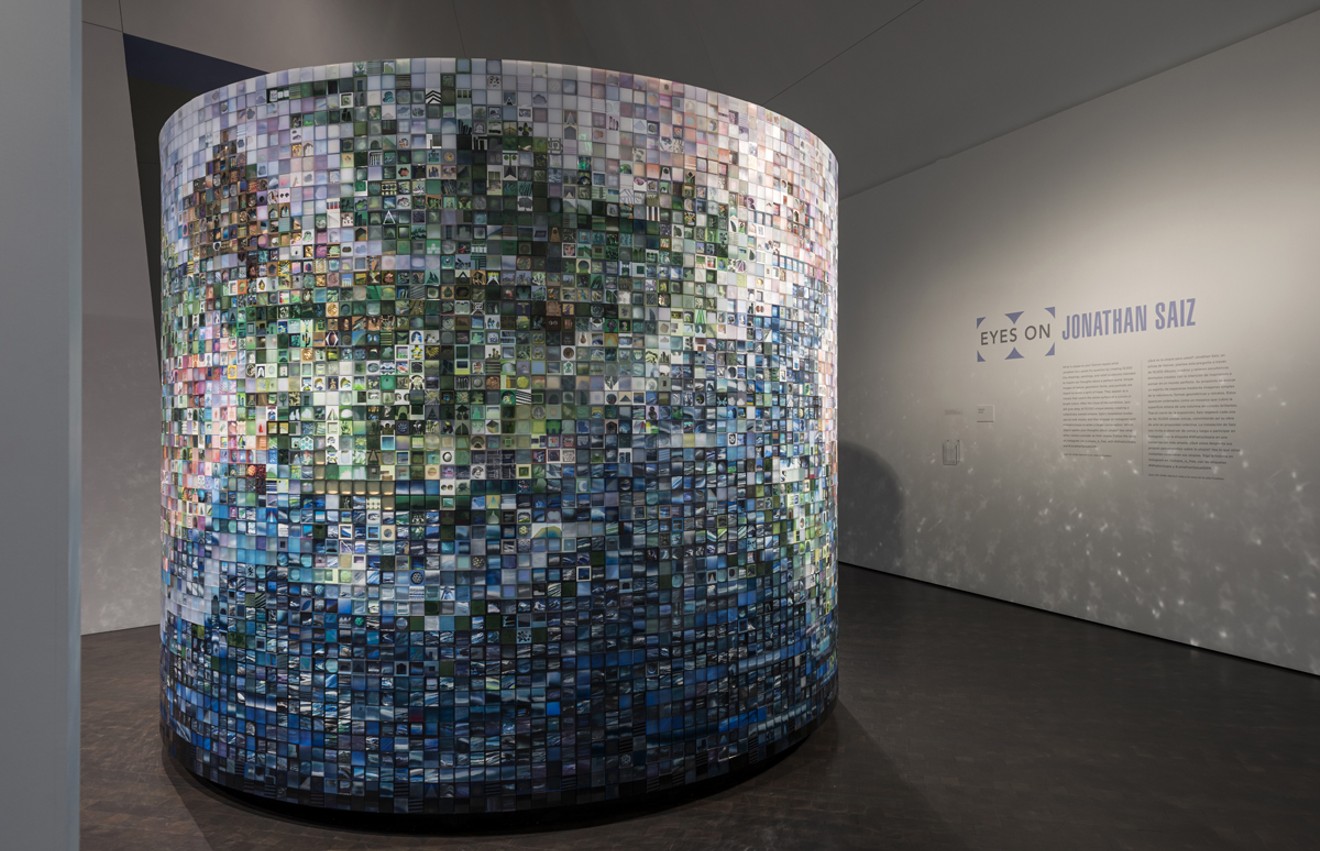Born in 1983, Saiz was raised in Thornton, where his parents still live. He studied at New York’s Parsons School of Design and at its program in Paris, as well as at the Maryland Institute College of Art. For the past fifteen years or so, he’s exhibited not just in galleries around Denver, but across the country and in Europe. The genesis of his current work dates back years, and it's never been as sharply refined as it is now, particularly in the DAM display.
Saiz told me that he'd proposed a show of 100,000 tiny paintings to Rebecca Hart, the DAM’s contemporary art curator, a year or so ago; when he didn't hear back, Saiz and his partner, Jason Gruhl, relocated to a remote, off-the-grid cabin in the Oregon wilderness. That's when Saiz was contacted by Hart, who wanted to give him a solo. Five months before the show was set to open, Saiz and Gruhl moved back to Denver so that the artist could get started creating the proposed pieces, an astounding volume of work.

Individual works, Instagram projection and detail of column from Eyes on Jonathan Saiz.
Courtesy of the Denver Art Museum
The overriding theme of the DAM show is an ideal future, and Saiz named the anchor installation “#WhatisUtopia,” with the idea of creating images evocative of utopian visions. But his visions are open-ended, meant to be interpreted by viewers in any way they want to. As revealed by the hashtag, Saiz is a master of social media, and he asked his many Instagram followers to send materials to include in the work. He let them know that he intended to ultimately give away the pieces and wouldn't be getting any personal gain from whatever was sent to him.
Interested in social justice and environmental issues, Saiz particularly wanted things made of gold and gemstones because of the way the earth is marred through mining and because of the human-rights abuses suffered by miners — the whole “blood diamond” idea. And the hive mind on Instagram came through, sending him gold and other all-but-forgotten keepsakes that Saiz incorporated into the works. The performative aspects of the piece — both the donated found items and the plan to give away the components at the end of the show — are essential to Saiz's aesthetic emphasis of de-monetizing art, part of his personal view of utopia.

Detail of separate pieces in plastic boxes encrusting the column in Eyes on Jonathan Saiz.
Courtesy of the Denver Art Museum
Seen as an overall object, the 10,000 boxes comprised by "#WhatisUptopia" read like a non-objective mosaic, a column covered in little squares set hard against each other. According to Saiz, this tiling effect was unintentional, and he says he didn't even notice it until the piece was being constructed — but it's clearly successful visually. Also unexpected were the glittery reflections projected onto the gallery walls that surround the column, as spotlights reflect on the multiplicity of shiny plastic surfaces.
The art-encrusted column is extremely engaging, and the morning I saw it, viewers were studying it for a long time, as was I. The show also includes a suite of individually presented tiny boxes in oversized frames, meant to express ideals in different social realms. And Instagram comes in again now that the installation is finished, in the form of a projection of the constantly changing feed of @utopia_is_free with images tagged #WhatisUtopia or #JonathanSaizatDAM.

Accumulated paintings of waves from Jonathan Saiz — Colorado Coastal.
Conor King, courtesy of K Contemporary
The K Contemporary exhibit is meant to function both as a single work and also as a collection of separate pieces. On one wall, in enormous vinyl letters, is the motto “The writing on the wall”; paintings of ocean waves wrap the other three, many of them simply leaning against the walls. The quote is meant both to raise the issue of climate change and also to refer back to Saiz's childhood, when he was raised as a Pentecostal Christian (a belief system that he’s long since abandoned), since the quote is from the Bible.

"The Writing on the Wall" graphic in Jonathan Saiz — Colorado Coastal.
Conor King, courtesy of K Contemporary
When I asked Saiz why he was so interested in creating such arduous projects so quickly, his response was surprising. He explained that he has a short attention span, which encourages him to move on to something new more or less constantly. But in the meantime, these two solos are definitely worth a long look.
Eyes on Jonathan Saiz, through November 17, Denver Art Museum, 100 West 14th Avenue Parkway
720-913-0131, denverartmuseum.org.
Jonathan Saiz – Colorado Coastal, through July 6, K Contemporary, 1412 Wazee Street, 303-590-9800, kcontemporaryart.com.











